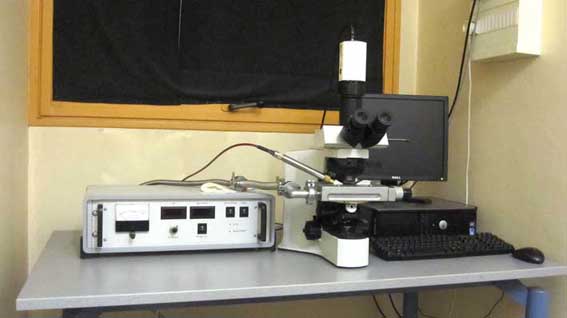The platform is equipped with a Cathodyne (NewTec) cold cathode, an Olympus BX41-P microscope and a Qimaging – Qicam Fast 1394 camera.
Principe de l’analyse :
Cathodoluminescence is the property of a solid to emit photons when subjected to an electron bombardment. Observed under a microscope, cathodoluminescence can be used to identify and finely characterize the different mineral phases making up various samples (limestones, sandstones, speleothems, shells, etc.), and to differentiate crystal growth phases (calcite, quartz, fluorite, etc.). It can easily identify apatite and zircon crystals from sediment or magmatic rock.
Analyses réalisées sur l’instrument :
This method is commonly used to define the relative chronology of different phases of mineral growth (i.e. cement stratigraphy) within a sample and/or at the scale of a basin or reservoir.


